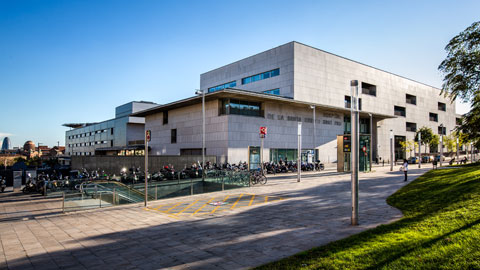Schizophrenia treated successfully with deep brain stimulation
Researchers at Hospital Sant Pau and the UAB for the first time have treated a psychiatric patient with schizophrenia using deep brain stimulation (DBS). The patient, who received the treatment seven months ago, is experiencing a sustained remission of deliriums.

Clinical Case
The patient is 46 years old and for the past 20 years has suffered from this disease, which has evolved and does not respond to any of the treatments applied, with an increase in the severity of symptoms during the past five years (delusions) and with a very limited quality of life. Her disease has kept her away from her family and social life, and has prevented her from carrying out normal activities.
Currently, seven months after the surgical treatment, the patient is energetic, the relationship with her family and friends has evolved favourably and she shows interest in herself and her environment.
The challenge facing the medical team at Sant Pau is to give her the support she needs to begin a life project after having suffered such a large deterioration in her quality of life due to 20 years of battling against this mental disease.
Hospital Sant Pau has also operated on two more patients who are currently recovering from their surgeries.
Surgical Procedures of a Multidisciplinary Team
The objective of this project is to study the efficacy of the DBS technique in patients with resistant schizophrenia. The project is based on the idea that schizophrenia is a disease which affects the same brain circuits as other neurological and psychiatric diseases which have been successfully treated with this technique. The problem lies in deciding the exact location (target) for these patients. That is why a discussion was posed, together with the FIDMAG group, to decide which target was ideal to locate the electrode, and finally two areas were proposed: the nucleus accumbens and the prefrontal cg25 zone.
Thus, basing themselves on two previous hypothesis and making use of the experience gained with the depression group at Sant Pau (D. Puigdemont) and the satisfactory treatment with the DBS technique, the interdisciplinary group at Hospital de Sant Pau formed by psychiatrists of the research group in Resistant Schizophrenia (UAB Department of Psychiatry Professors Enric Álvarez and I·luminada Corripio) , together with neurosurgeons J. Molet and R. Rodriguez, decided to take on the first surgical intervention in which neurostimulators (electrodes) were applied to the two brain areas mentioned. Schizophrenia (with its main symptoms being delusions and hallucinations) is known to have a distorted regulation of the frontal-subcortical circuits of the brain (a dopaminergic dysregulation in particular). When considering different alternatives, researchers took into consideration the neurosurgical accessibility of these brain areas in comparison to others.
DBS Technique
Deep brains stimulation was first used at Hospital Sant Pau as an innovative technique some 15 years ago with patients suffering from Parkinson's disease. Given the good results among patients and thanks to the improvements made in neuroimaging techniques, which allow observing the brain's reaction to different types of disorders, the technique was also applied to patients suffering from depression, and again represented an innovative treatment.
The experience of this multidisciplinary team represents the necessary stepping stone in implementing a groundbreaking project whose objective is to help patients with resistant schizophrenia, calculated to be around 30-40% of patients suffering from this disorder in which positive symptoms (delusions and hallucinations) persist. This situation is associated with severe suffering for patients, their families and friends.
Given this context and the lack of therapeutic resources, researchers believed it necessary to look for new therapeutic strategies and hope to help in the improvement of the quality of life of these patients and their families, as well as to advance in the knowledge of the neurobiological causes of resistant schizophrenia.
Original article:
Deep brain stimulation of the subcallosal cingulate gyrus: further evidence in treatment-resistant major depression. International Journal of Neuropsychopharmacology.
http://www.ncbi.nlm.nih.gov/pubmed/21777510